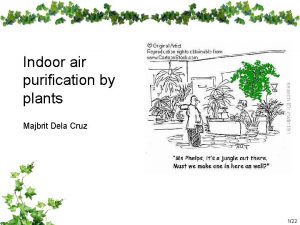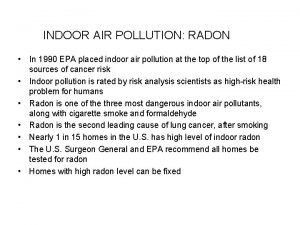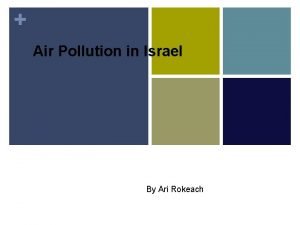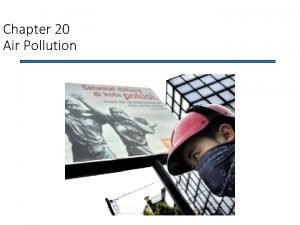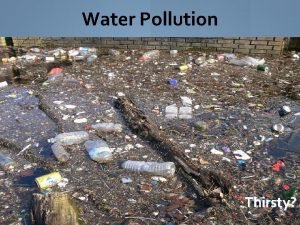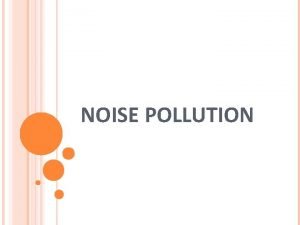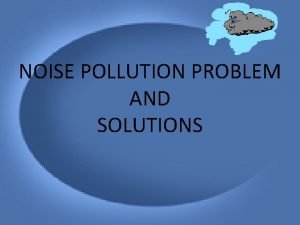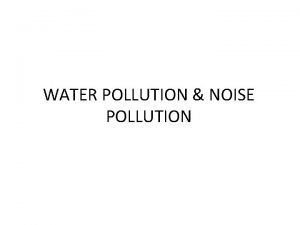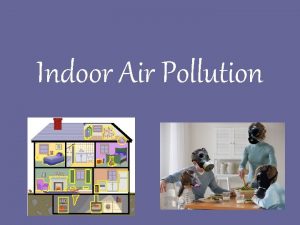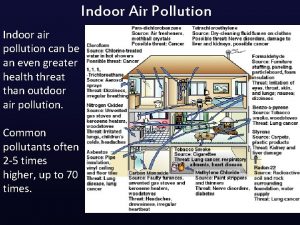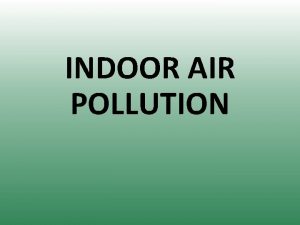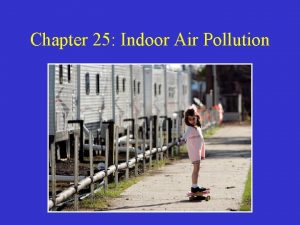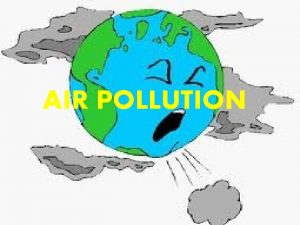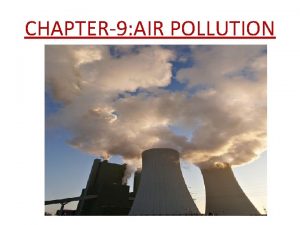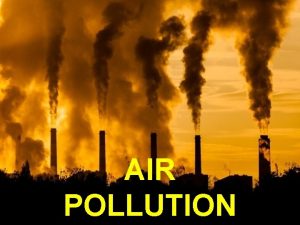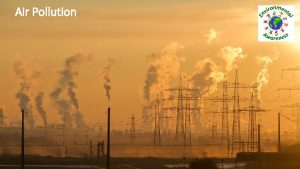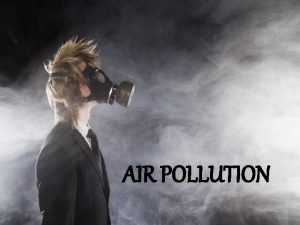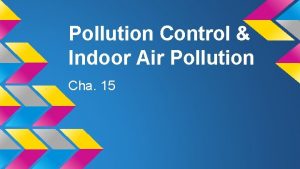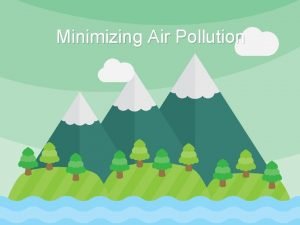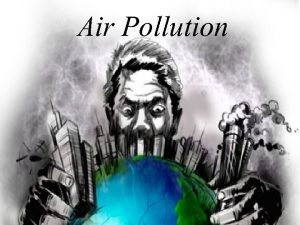CHAPTER 25 Indoor Air Pollution Sources of indoor

















- Slides: 17

CHAPTER 25 Indoor Air Pollution

Sources of indoor air pollution

Environmental Tobacco smoke (2 nd hand) Legionella pneumophila Molds and fungus Radon gas Pesticides Asbestos Formaldehyde Dust mites pollen

Environmental Tobacco Smoke Secondhand smoke 2 sources Smoke exhaled by smokers Smoke emitted from burning tobacco The most hazardous indoor pollutant

Second hand smoke Greater than 40, 000 deaths each yr (heart disease & cancer) Contains several thousand chemicals NO, CO, hydrogen cyanide, 40 carcinogenic chems. Separate smokers from non-smokers, ban smoking, improve ventilation, education & social pressure

Legionella pneumophila Causes Legionnaires’ disease Lives in pond water 20 species Spread through air conditioning/heating ducts Transported as a bacerial aerosol Hospitals, cruise ships

Molds & fungus Release toxic spores causing chronic lung inflammation and scarring Usually undiagnosed Molds & fungus reside between walls, where water is trapped.

Radon Colorless, odorless & tasteless Radioactive gas from soil and rock Seeps into buildings through cracks in foundation. Basements are a risk Seal & caulk cracks, build homes with a plastic layer or gravel layer beneath foundation. Leaches into water supply and is aerated inside homes when faucets are turned on.

Radon Gas Radon Naturally occurring radioactive gas Colorless, odorless, tasteless Only identified through proper testing Health hazard when leaked into homes Exposure is associated with lung cancer


Pesticides Applied inside of bldgs to control insects and rodents. Possible carcinogens Aerated when sprayed

asbestos Fireproofing, insulation, vinyl flooring, brake linings Skin irritation, lung cancer (asbestosis) Removed through encapsulation Problem for workers & nearby residents when old bldgs are being demolished or renovated

Asbestos

Formaldehyde Plywood, particle board, construction material, carpeting Glue/binder in the materials Headaches, respiratory irritation, eye irritation Increase ventilation, use formaldehyde free

Sick Building Syndrome A condition associated with an indoor environment that appears to be unhealthy The symptoms people report cannot be traced to any one particular cause

Dust Mites and Pollen

Pathways, Processes and Driving Forces Chimney Effect (Stack Effect) Process whereby warmer air rises in buildings to upper levels and is replaced in the lower portion of the building by outdoor air drawn through a variety of openings, such as windows doors or cracks in the foundation or walls
 Indoor air pollutants
Indoor air pollutants Indoor air pollution examples
Indoor air pollution examples Radon indoor air pollution
Radon indoor air pollution Prevention of indoor air pollution
Prevention of indoor air pollution Section 1: what causes air pollution answer key
Section 1: what causes air pollution answer key Chapter 12 air section 1 what causes air pollution
Chapter 12 air section 1 what causes air pollution Stationary and mobile sources of air pollution
Stationary and mobile sources of air pollution Sources of smog
Sources of smog Mobile source definition
Mobile source definition Hubungan air tanah dan tanaman
Hubungan air tanah dan tanaman Print sources and web sources
Print sources and web sources Importance water resources
Importance water resources Source of contamination
Source of contamination Major source of water pollution
Major source of water pollution Sound pollution
Sound pollution Noise pollution problems
Noise pollution problems Example of noise pollution
Example of noise pollution Source of thermal pollution
Source of thermal pollution
